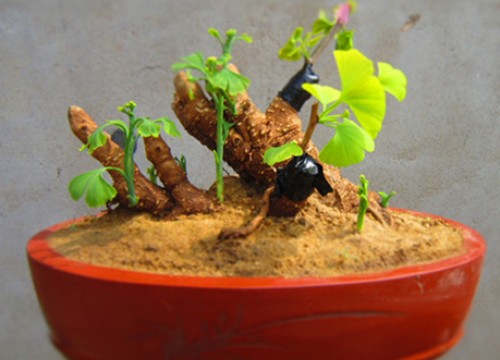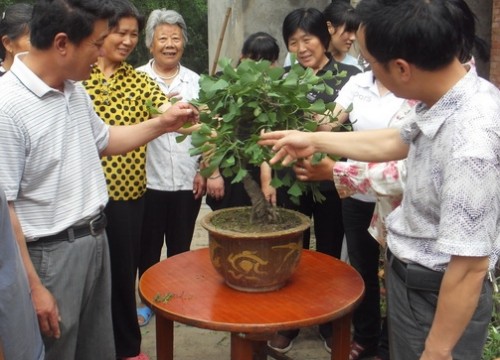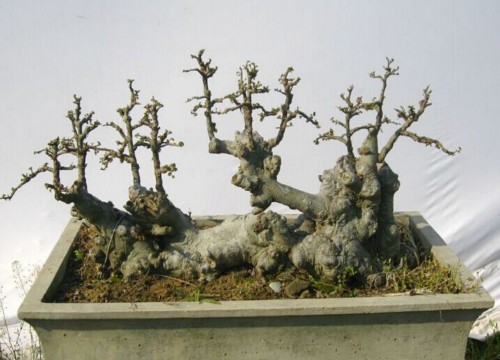Application of fertilizer to ginkgo potted plants
Ginkgo biloba is a kind of tree species that has survived for a long time, and it has been regarded as a good selection of bonsai since ancient China. The types of ginkgo bonsai can be divided into three types: leaf viewing, fruit viewing and pile viewing. In order to make ginkgo bonsai, we should choose the root tillering seedlings and stalactite branches of ginkgo trees, use various methods to tie the branches in the growing season of ginkgo trees, and then pay attention to timely pruning and reasonable watering and fertilization. The following is for you to share some fertilization skills of ginkgo bonsai.

Because of the limited container, the root growth of potted ginkgo biloba is inhibited, and there must be sufficient fertility in the limited pot soil in order to maintain the growth and fruiting of ginkgo biloba. Select loose and fertile pastoral soil, sift, add 1/3 fully mature organic manure (such as compost, stable manure, green manure, etc.), add 1/5 crushed plant straw, soak the above raw materials with 5% human feces and urine or 1% urea aqueous solution, hold the humidity into a ball, let go, pile it in a sunny place, cover it with plastic film, and ferment at high temperature for 15 to 25 days.
To apply base fertilizer every winter, organic fertilizer, such as rotten bean cake or barnyard manure, should be used. During the peak growth period in spring and summer, it is appropriate to often apply thin cake fertilizer or cooked human feces and urine to promote the growth of branches and leaves and maintain the bright green leaf color.
When sprouting in early spring, nitrogen fertilizer was applied to accelerate sprouting, 0.1% borax solution was sprayed in the peak flowering period, and phosphorus and potassium fertilizer was applied in the fruit expansion period after anthesis. Potted ginkgo biloba should be fertilized less frequently, which can not only prevent root burning but also be fully absorbed.
Time: 2019-06-12 Click:
- Prev

Pruning method of bonsai of ginkgo trees
Pruning is one of the main techniques for making ginkgo bonsai. The purpose is to highlight the trunk, enrich the ornamental branches, express different artistic conceptions, improve the artistic value, and make it natural and simple, elegant and elegant. The principle is to cut off redundant side branches, parallel branches, cross branches, overdense branches, overgrown branches and diseased branches.
- Next

Modeling method of Elm Bonsai
According to the basic shape of the old pile, the elm bonsai should be made into different forms of bonsai, such as straight dry type, curved dry type, oblique dry type, water-facing type, cliff type, wind type, jungle type, stone-attached type and so on. The modeling time can be not only in the dormant period after falling leaves, but also in the growing period.
Related
- Fuxing push coffee new agricultural production and marketing class: lack of small-scale processing plants
- Jujube rice field leisure farm deep ploughing Yilan for five years to create a space for organic food and play
- Nongyu Farm-A trial of organic papaya for brave women with advanced technology
- Four points for attention in the prevention and control of diseases and insect pests of edible fungi
- How to add nutrient solution to Edible Fungi
- Is there any good way to control edible fungus mites?
- Open Inoculation Technology of Edible Fungi
- Is there any clever way to use fertilizer for edible fungus in winter?
- What agents are used to kill the pathogens of edible fungi in the mushroom shed?
- Rapid drying of Edible Fungi

